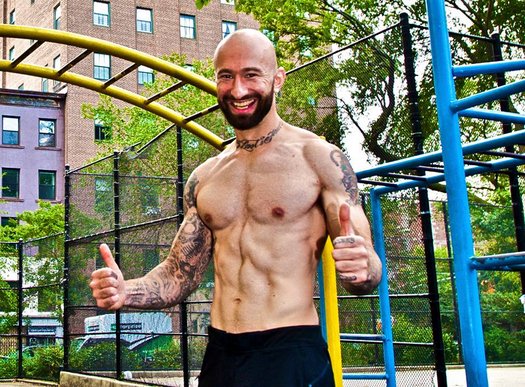
In Progressive Calisthenics, we tend to emphasize strength. Many of the most visually impressive calisthenics moves require little more than a high strength-to-mass ratio. Though I often point out that true bodyweight mastery encompasses flexibility and balance as well, if you actually want to perform well in sports (or any prolonged physical activity) there’s another crucial piece to the puzzle: conditioning. A few lucky people are born athletes; the rest of us need to put in some extra work.
Strength is a fairly easy concept for most people to understand, but conditioning can be a confusing concept. What exactly does it mean to be conditioned?
One way to think of conditioning is the ability to perform continuous work without fatigue. It’s impressive to see someone muster a clean muscle-up or a precise pistol squat; it’s a whole different task to perform multiple muscle-ups and pistol squats in the same circuit without resting!
Furthermore, training for endurance challenges like a Marathon or Triathlon can help you reach new levels of mental resolve. Your mind must be strong enough to push through the physical discomfort of your training in order to cause adaptations in your body. This mental fortitude can be cultivated through practice and will carry over into your strength training. The stronger your heart, lungs, mind and generally recovery abilities, the more volume you will be able to handle in your strength work.
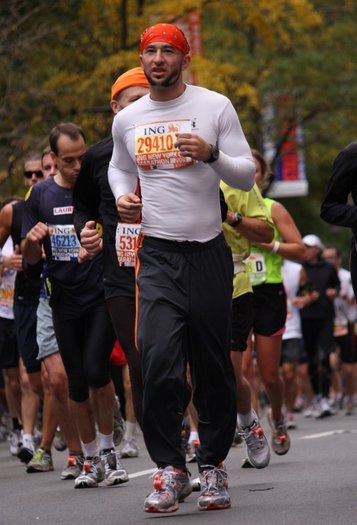
Sometimes conditioning is mistakenly confused with cardiovascular endurance, which is only one aspect of it. Conditioning is actually a combination of several components including cardiovascular output, aerobic capacity, lactic threshold and, perhaps most importantly, familiarity with the given modality. The better your technique, the less energy you need to exert. That’s why athletics tend to be so specified. Powerlifters and gymnasts are among the strongest athletes, but I’ve never heard of anyone who successfully competed in both at an elite level. Likewise, boxers and basketball players both tend to be highly conditioned, yet their individual skillsets are specific to their individual sports.
While sport specific work typically makes up the bulk of most athlete’s practice time, almost every serious athlete also dedicates a good deal of time to improving their overall fitness by practicing general conditioning exercises that require little skill.
Though I find the conventional approach to “cardio” a huge turn-off, I absolutely believe that even the casual fitness enthusiast should be capable of demonstrating basic fitness conditioning in a variety of contexts.
Below are some bodyweight conditioning exercises that you can practice outdoors, along with brief suggestions on how to begin incorporating them into your routine. No cardio machines required!

Jogging
Boxers and other athletes have been incorporating “road work” into their training for generations. Arguably the most fundamental form of bodyweight exercise ever, jogging may be the best place for you to begin building your conditioning. The key is to go at a slow enough pace to maintain a steady speed for as long as possible. For beginners this may be slow and brief, which is fine. With consistency you can build to longer amounts of time and also begin to increase your speed.
If you are new to jogging, I recommend alternating between jogging and walking for a minute each, for no more than 30 minutes total. Focus on staying light on your feet in order to minimize any joint impact. Though there is some technique involved, running is a fairly low-skill activity. Any able-bodied person can begin a running program, you just need to go slowly and be willing to put your ego aside.
Since jogging is low impact and low intensity, you can start with three days a week, adding more days as your abilities improve. Eventually you can build up to several miles a day if you so desire.
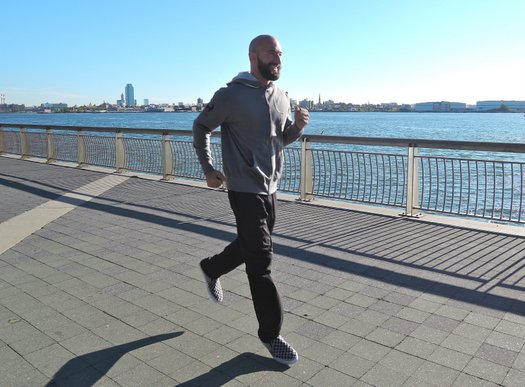
Sprinting
When you are new to running, maintaining a steady jog can quickly start to feel like a sprint! Once your legs have acclimated to the point where you can handle 20 minutes or more of steady jogging, however, I recommend incorporating some real sprint work into your regimen.
After a 5-10 minute jog to warm up, aim for 3-5 rounds of 10-20 second sprints with 3-5 minutes of recovery time between rounds. As sprinting is much more intense than jogging, I suggest you keep your frequency fairly low. Once a week should be plenty to start.
Sprinting is a relative term, so don’t worry too much about how fast you are actually going. Instead, focus on your intensity. Try to push yourself to 90-95% of how fast you would run if you were being chased by a bear!

Stair Climbing
If you have access to stadium bleachers (or don’t mind being the weirdo running up the stairs at the office), stair climbing is another simple activity that can greatly improve your overall conditioning. There are some people who get winded walking up one flight of stairs, others can run to the top of the Empire State building in under 10 minutes. No matter where you fall on the spectrum, you can get a great workout on the stairs without spending much time or any money.
Stair climbing is best approached with a slow-and-steady mindset. Start out by attempting to walk up stairs at a continuous pace for 10-20 minutes. Over time you can build to running the stairs and doing longer distances.
Swimming
I almost didn’t include swimming on this list because it requires a body of water, which not everyone has access to. Ultimately, however, it is a bodyweight exercise that anyone can do and there are plenty of naturally occurring places to swim (you don’t have to go to the pool). The great thing about swimming is that it is very low impact, therefore making it safe for pretty much anyone, regardless of weight problems or joint issues.
As swimming requires a lot more technique than the other activities on this list, you may need to take some lessons when you are starting out (or restarting after a long hiatus).
As before, focus on your relative intensity rather than how fast you are going. Beginners can start out by swimming several sets of 20-50 meters at a time with short recovery breaks in between efforts. From there you can gradually build to swimming continuously for 30 minutes or longer.
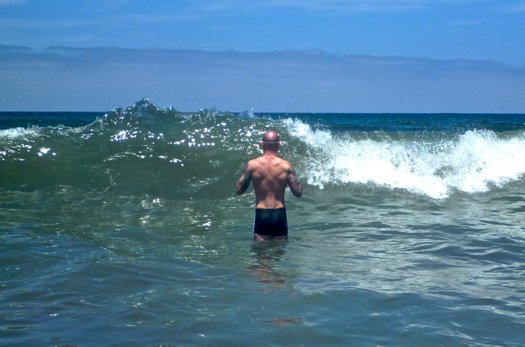
Cardio Calisthenics
I hate using the word cardio, but I sure love me some alliteration! Cardio calisthenics are bodyweight exercises that require fairly low levels of strength so that they can be performed for extended amounts of time. Jumping jacks, mountain climbers and burpees are all examples of cardio calisthenics. As you get stronger, push-ups, pull-ups and even pistol squats can become conditioning exercises.
A sample cardio calisthenics workout might consist of 50 jumping jacks, followed by 40 mountain climbers, followed by 20 burpees. Rest between each exercise as needed and aim to repeat the whole circuit 3-5 times. Eventually you can try building to 5 rounds with no rest.
The Century
That’s right, the PCC Century Test is both a strength and conditioning challenge. I’ve observed several PCC hopefuls over the last year and a half who were strong enough to do the required reps for each exercise individually but lacked the conditioning to recover enough to perform all 100 reps in the 8 minutes needed to earn the PCC credential. If you want to be a PCC, you’ve got to have a solid foundation of strength and conditioning.
Get It Together
In my early twenties, I could do 20 pull-ups or 50 push-ups with no problem, but I couldn’t even run one mile. My weak link was exposed when I attended a personal trainer workshop that included a barrage of fitness tests, one of which was a 1.5 mile run. Even though I didn’t finish last, it was a big embarrassment for me. After that humbling experience I decided I needed to work on my conditioning, but I had no idea where to start! When will I fit it into my schedule? What if I lose strength? I was filled with doubts, but they were really just excuses. Just like your strength training, if you are serious about improving your conditioning, you will find the time to make it happen.
I began to practice running in the mornings before breakfast and moved my strength work to afternoons or evenings. On days where I didn’t have time for both strength and conditioning, I got in whatever I could. Sometimes I combined the two by doing circuit workouts like the ones in the videos above. Like anything, the beginning was the hardest part. As I often say, the first is the worst!
I was successful because I didn’t take an all-or-nothing approach to fitness. Some workouts were more encouraging than others, but over time I found that consistency trumps all else. Slowly, my conditioning began to improve as well as my strength. The same will happen to you if you make the decision and follow through with it.
Stop overthinking things and get started! Good things come to those who train!
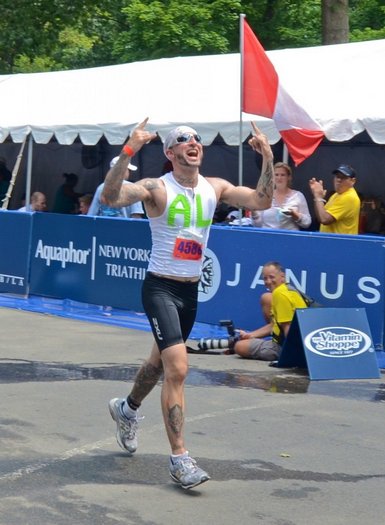
***
About Al Kavadlo: Al Kavadlo is the lead instructor for Dragon Door’s Progressive Calisthenics Certification. Recognized worldwide for his amazing bodyweight feats of strength as well as his unique coaching style, Al is the author of three books, including Raising The Bar: The Definitive Guide to Pull-up Bar Calisthenics and Pushing The Limits! Total Body Strength With No Equipment. Read more about Al on his website:www.AlKavadlo.com.